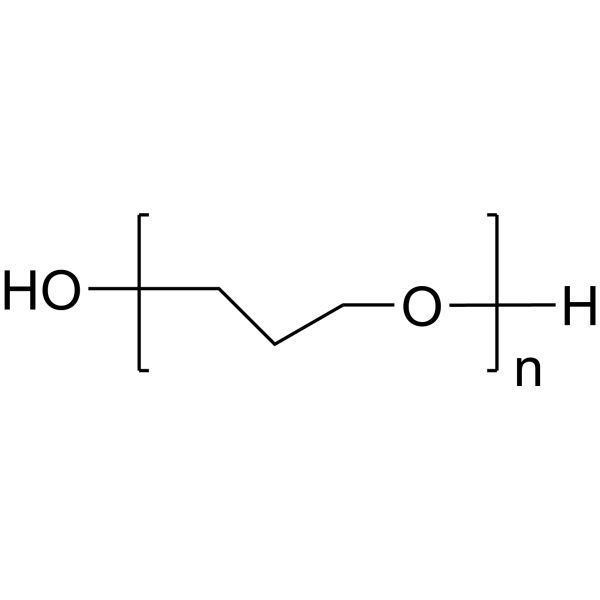CHEMICAL IDENTIFICATION
-
RTECS NUMBER :
-
TQ4025000
-
CHEMICAL NAME :
-
Polyethylene glycol #1000
-
CAS REGISTRY NUMBER :
-
25322-68-3
-
LAST UPDATED :
-
199710
-
DATA ITEMS CITED :
-
15
HEALTH HAZARD DATA
ACUTE TOXICITY DATA
-
TYPE OF TEST :
-
Standard Draize test
-
ROUTE OF EXPOSURE :
-
Administration into the eye
-
SPECIES OBSERVED :
-
Rodent - rabbit
-
REFERENCE :
-
85JCAE "Prehled Prumyslove Toxikologie; Organicke Latky," Marhold, J., Prague, Czechoslovakia, Avicenum, 1986 Volume(issue)/page/year: -,1413,1986 ** ACUTE TOXICITY DATA **
-
TYPE OF TEST :
-
LD50 - Lethal dose, 50 percent kill
-
ROUTE OF EXPOSURE :
-
Oral
-
SPECIES OBSERVED :
-
Rodent - rat
-
DOSE/DURATION :
-
32 gm/kg
-
TOXIC EFFECTS :
-
Details of toxic effects not reported other than lethal dose value
-
REFERENCE :
-
DOWCC* Dow Chemical Company Reports. (Dow Chemical USA, Health and Environment Research, Toxicology Research Lab., Midland, MI 48640) Volume(issue)/page/year: MSD-937
-
TYPE OF TEST :
-
LD50 - Lethal dose, 50 percent kill
-
ROUTE OF EXPOSURE :
-
Intraperitoneal
-
SPECIES OBSERVED :
-
Rodent - rat
-
DOSE/DURATION :
-
15570 mg/kg
-
TOXIC EFFECTS :
-
Kidney, Ureter, Bladder - other changes
-
REFERENCE :
-
ARZNAD Arzneimittel-Forschung. Drug Research. (Editio Cantor Verlag, Postfach 1255, W-7960 Aulendorf, Fed. Rep. Ger.) V.1- 1951- Volume(issue)/page/year: 3,451,1953
-
TYPE OF TEST :
-
LD50 - Lethal dose, 50 percent kill
-
ROUTE OF EXPOSURE :
-
Intraperitoneal
-
SPECIES OBSERVED :
-
Rodent - mouse
-
DOSE/DURATION :
-
2 gm/kg
-
TOXIC EFFECTS :
-
Lungs, Thorax, or Respiration - respiratory depression
-
REFERENCE :
-
JPETAB Journal of Pharmacology and Experimental Therapeutics. (Williams & Wilkins Co., 428 E. Preston St., Baltimore, MD 21202) V.1- 1909/10- Volume(issue)/page/year: 103,293,1951
-
TYPE OF TEST :
-
LDLo - Lowest published lethal dose
-
ROUTE OF EXPOSURE :
-
Intravenous
-
SPECIES OBSERVED :
-
Mammal - dog
-
DOSE/DURATION :
-
3 gm/kg
-
TOXIC EFFECTS :
-
Details of toxic effects not reported other than lethal dose value
-
REFERENCE :
-
JPETAB Journal of Pharmacology and Experimental Therapeutics. (Williams & Wilkins Co., 428 E. Preston St., Baltimore, MD 21202) V.1- 1909/10- Volume(issue)/page/year: 103,293,1951
-
TYPE OF TEST :
-
LD50 - Lethal dose, 50 percent kill
-
ROUTE OF EXPOSURE :
-
Administration onto the skin
-
SPECIES OBSERVED :
-
Rodent - rabbit
-
DOSE/DURATION :
-
>20 gm/kg
-
TOXIC EFFECTS :
-
Details of toxic effects not reported other than lethal dose value
-
REFERENCE :
-
DOWCC* Dow Chemical Company Reports. (Dow Chemical USA, Health and Environment Research, Toxicology Research Lab., Midland, MI 48640) Volume(issue)/page/year: MSD-937
-
TYPE OF TEST :
-
LD50 - Lethal dose, 50 percent kill
-
ROUTE OF EXPOSURE :
-
Oral
-
SPECIES OBSERVED :
-
Rodent - guinea pig
-
DOSE/DURATION :
-
22500 mg/kg
-
TOXIC EFFECTS :
-
Details of toxic effects not reported other than lethal dose value
-
REFERENCE :
-
JAPMA8 Journal of the American Pharmaceutical Association, Scientific Edition. (Washington, DC) V.29-49, 1940-60. For publisher information, see JPMSAE. Volume(issue)/page/year: 39,349,1950 ** TUMORIGENIC DATA **
-
TYPE OF TEST :
-
TDLo - Lowest published toxic dose
-
ROUTE OF EXPOSURE :
-
Intravaginal
-
SPECIES OBSERVED :
-
Rodent - mouse
-
DOSE/DURATION :
-
416 mg/kg/Y-I
-
TOXIC EFFECTS :
-
Tumorigenic - equivocal tumorigenic agent by RTECS criteria Reproductive - Tumorigenic effects - other reproductive system tumors
-
REFERENCE :
-
BJCAAI British Journal of Cancer. (Macmillan Press Ltd., Houndmills, Basingstoke, Hants. RG21 2XS, UK) V.1- 1947- Volume(issue)/page/year: 15,252,1961 *** NIOSH STANDARDS DEVELOPMENT AND SURVEILLANCE DATA *** NIOSH OCCUPATIONAL EXPOSURE SURVEY DATA : NOHS - National Occupational Hazard Survey (1974) NOHS Hazard Code - T0788 No. of Facilities: 60 (estimated) No. of Industries: 4 No. of Occupations: 6 No. of Employees: 1675 (estimated) NOHS - National Occupational Hazard Survey (1974) NOHS Hazard Code - 80189 No. of Facilities: 34023 (estimated) No. of Industries: 237 No. of Occupations: 159 No. of Employees: 487377 (estimated) NOES - National Occupational Exposure Survey (1983) NOES Hazard Code - X7669 No. of Facilities: 37662 (estimated) No. of Industries: 225 No. of Occupations: 183 No. of Employees: 1335913 (estimated) No. of Female Employees: 861947 (estimated)
|





